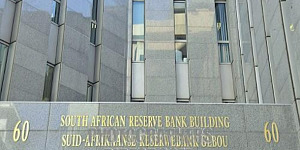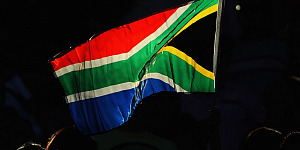South Africa's central bank left its benchmark repurchase rate steady at 7.0 percent, as expected, but said it remains concerned about the trajectory of inflation and it "remains ready to act appropriately to any significant change in the inflation outlook."
The South African Reserve Bank (SARB), which has raised its rate by 200 basis points since January 2014, including 75 points this year, added a weak domestic economy, along with a rise in the rand's exchange rate and a marginal improvement in inflation, had provided it with room to delay a further tightening of policy "for now."
However, SARB Governor Lesetja Kganyago added that the bank's monetary policy committee, which was unanimous in its decision, was aware that such favorable factors could reverse quickly and the impact of a higher rand on the outlook for inflation would depend on whether the exchange rate was sustained at this stronger level.
South Africa's headline inflation rate rose to 6.3 percent in June from 6.1 percent in May but the bank lowered its outlook for 2016 inflation to average 6.6 percent from a previous 6.7 percent.
"Nevertheless, inflation is still expected to accelerate further this year and is only expected to return to within the target range of 3-6 percent during the third quarter of 2017," Kganyago said, adding that inflation is expected to lead at 7.1 percent in the fourth quarter of this year, down from a previous forecast of 7.3 percent due to lower administered prices for petrol.
For 2017 inflation is expected to average 6.0 percent, down from 6.2 percent, and then 5.5 percent in 2018, up from 5.4 percent.
After depreciating steadily since 2011, the rand has been firming since mid-January and has reversed losses following the U.K. referendum on the European Union. The rand was trading at 14.2 to the U.S. dollar today, up on the SARB's policy decision, to have appreciated 9.3 percent this year, stronger than the central bank had expected.
"Despite this recent strength, the rand remains vulnerable to possible "risk-off" global scenarios; changes in US monetary policy expectations; and domestic concerns including the possibility of ratings downgrades later in the year," Kganyago said.
He added that the outlook for economic growth "remains extremely challenging." Although the 0.2 percent annual contraction in first quarter growth is expected to be the low point in the cycle, the recovery is expected to be weak.
SARB revised down its growth forecast for 2016 to zero percent from a previous 0.6 percent. For 2017 growth is forecast of 1.1 percent, down from 1.3 percent, and for 2018 growth is seen at 1.5 percent, down from 1.7 percent.
"The outlook is clouded by uncertainty surrounding the longer term market and global growth implications of Brexit," Kganyago added.






































